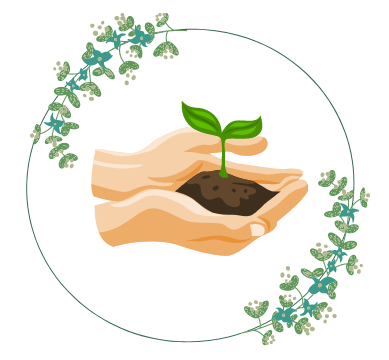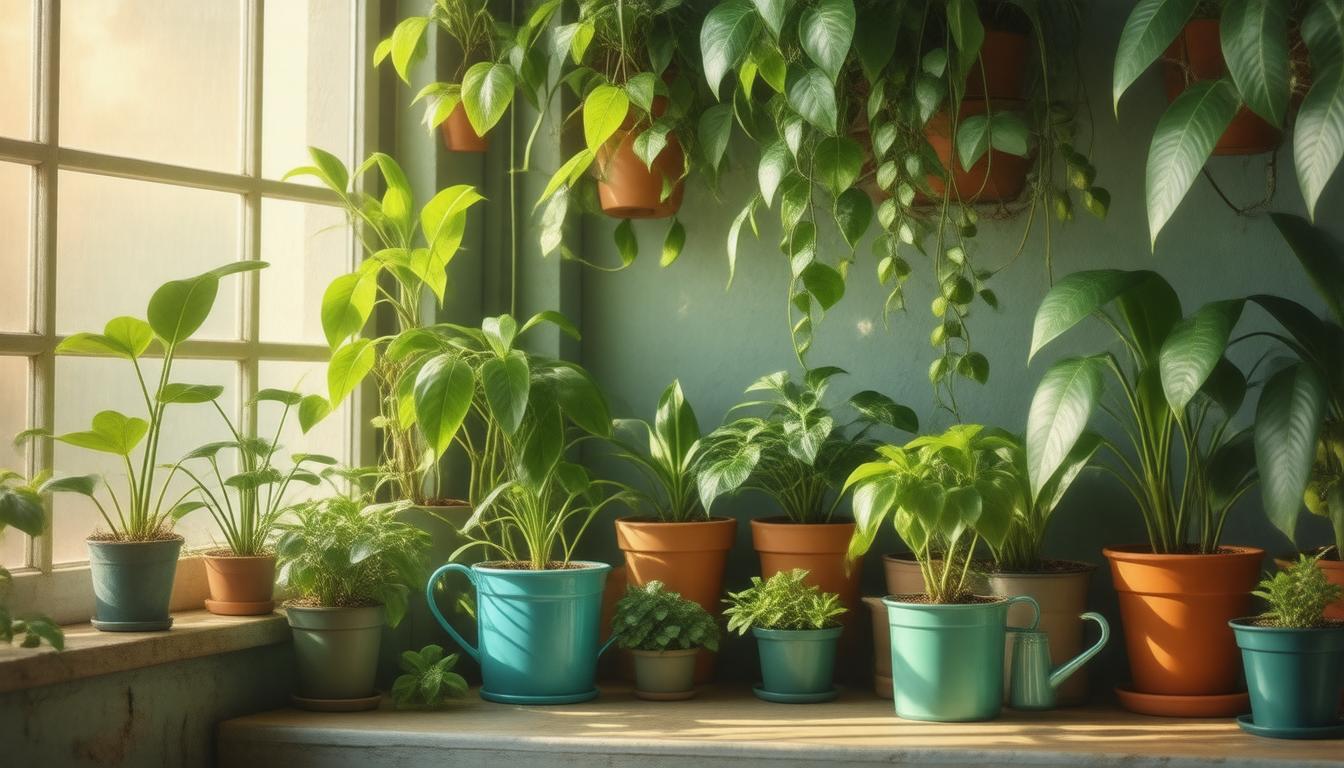Creating a lush indoor garden can transform your living space and boost your well-being, but it can be challenging without the right knowledge. In this article, we’ll explore Indoor Plant Tips That Actually Work: Grow Healthy Happy Plants. From understanding your plant’s specific needs to optimal watering techniques, and addressing common pest issues, these expert insights will help you nurture a thriving indoor garden. Whether you’re a seasoned plant parent or a curious beginner, these tips are designed to empower you to cultivate beautiful, healthy plants in your home.
Key Takeaways
- Indoor plants have specific needs that vary by species, and understanding these is crucial for their success.
- Choosing the right potting mix is essential for providing adequate drainage and nutrition.
- Optimal watering techniques involve knowing when and how much to water to prevent over or under-watering.
- Proper light and placement can significantly impact your plant’s health and growth potential.
- Regular monitoring for pests and providing proper fertilization are key to maintaining healthy, thriving indoor plants.
Understanding Your Indoor Plant’s Needs
When it comes to maximizing the beauty and health of your indoor plants, understanding their unique needs is essential. This includes recognizing the right amount of light, water, and nutrients required for each specific plant species. For instance, some plants thrive in low-light conditions, while others might require bright, indirect sunlight to flourish. Additionally, overwatering is a common mistake that can lead to root rot, so it’s crucial to learn about proper watering techniques for your indoor plants. Implementing indoor plant tips that actually work will ensure that your leafy companions grow healthy and happy, contributing to a vibrant indoor atmosphere. Regularly checking the humidity levels in your home and adjusting as needed can further aid in creating a nurturing environment. By understanding your indoor plant’s needs and applying these practical tips, you can enhance their growth and longevity, ultimately bringing more life into your space.
Choosing the Right Potting Mix
When it comes to success in indoor gardening, one of the essential indoor plant tips that actually work is choosing the right potting mix. A quality potting mix not only supports the growth of healthy roots but also provides the necessary nutrients that indoor plants need to thrive. Opt for a potting mix specifically designed for indoor plants, which typically features a blend of peat moss, vermiculite, and perlite. This combination allows for proper drainage and aeration, preventing waterlogging that can lead to root rot. It’s also beneficial to select potting mixes fortified with organic fertilizers, as they can provide a slow-release of nutrients that sustain your plants over time. Remember, the right potting mix can make all the difference in growing healthy, happy plants that flourish in interior settings.
‘The greatest gift of the garden is the restoration of the five senses.’ – Hanna Rion
Optimal Watering Techniques
When it comes to indoor gardening, mastering optimal watering techniques is crucial for ensuring your plants thrive. One of the best indoor plant tips that actually work involves understanding the specific water needs of your greenery. For example, most indoor plants prefer to dry out slightly between waterings, so check the top inch of soil; if it feels dry, it’s time to water. Additionally, using room temperature water helps prevent shocking the roots. Consider implementing a consistent watering schedule based on each plant’s individual requirements, and remember that less is often more—overwatering can lead to root rot and other issues. Incorporating moisture-retaining potting mixes can also be beneficial, creating a balanced environment that promotes growth while minimizing risks. By applying these optimal watering techniques, you’ll be well on your way to growing healthy, happy plants that beautify your indoor space.
Importance of Light and Placement
When it comes to successfully nurturing indoor plants, understanding the importance of light and placement is crucial. Proper lighting is one of the primary factors that can make or break your indoor gardening experience. Different plants have varying light requirements, with some thriving in direct sunlight, while others prefer low-light conditions. Therefore, selecting the right spot—whether it’s a sunny windowsill or a shaded corner—can significantly impact your plant’s health. Additionally, it’s essential to rotate your plants periodically to ensure that all sides receive equal light exposure, which promotes balanced growth. Coupled with other indoor plant tips that actually work, such as monitoring humidity and watering based on the specific needs of your plants, achieving lush greenery in your living space becomes a rewarding endeavor.
Common Indoor Plant Pests and Solutions
Indoor plants can bring life to any space, but they are often targeted by pests that can undermine your efforts. Understanding the common indoor plant pests and implementing effective solutions is essential for keeping your green friends healthy and thriving. One of the most notorious pests is the spider mite, which thrives in dry conditions and can quickly infest your plants. To combat these tiny invaders, regular misting and introducing predatory insects like ladybugs can be effective solutions. Another common pest is aphids, known for their sap-sucking habits. A diluted solution of neem oil can work wonders in deterring them. Finally, mealybugs, identifiable by their cotton-like appearance, can be easily removed with a cotton swab dipped in alcohol. These simple, effective indoor plant tips that actually work will help you cultivate a lush, thriving indoor garden, ensuring your plants remain healthy and happy.
Fertilizing and Repotting for Growth
When it comes to nurturing indoor plants, understanding the basics of fertilizing and repotting is essential for thriving greenery in your home. Indoor plant tips that actually work emphasize the importance of choosing the right fertilizer for your specific plant type. For instance, using a balanced, water-soluble fertilizer every few weeks during the growing season can significantly enhance your plants’ growth and health. Additionally, repotting is a critical process that should not be overlooked. Ideally, you’ll want to repot your plants every 18–24 months or when they outgrow their pot, as this not only provides fresh soil rich in nutrients but also offers more space for root development. By incorporating these fertilizing and repotting techniques into your plant care regimen, you can ensure that your indoor plants remain healthy and happy, embodying the essence of vibrant indoor greenery.
Frequently Asked Questions
What are the key factors to consider for understanding my indoor plant’s needs?
Key factors include understanding the specific requirements of your plant species, such as light preferences, watering frequency, humidity levels, and temperature ranges.
How do I choose the right potting mix for my indoor plants?
Choosing the right potting mix involves selecting a blend that suits your plant’s needs, typically focusing on drainage, aeration, and nutrient content. Look for specific mixes designed for the type of plants you have, such as succulents, orchids, or tropical plants.
What are optimal watering techniques for indoor plants?
Optimal watering techniques involve checking the moisture level of the soil before watering, using the soak and dry method, ensuring proper drainage, and adjusting your watering schedule based on seasons and plant growth.
How can I ensure my indoor plants receive the right amount of light?
Ensure correct lighting by placing your plants in areas where they receive adequate natural light according to their needs—some may thrive in bright direct light, while others prefer indirect light or shade.
What should I do if I notice pests on my indoor plants?
If you notice pests, identify the type of pest and apply appropriate treatment options such as insecticidal soap, neem oil, or introducing beneficial insects, while also ensuring that you maintain proper hygiene and care to prevent future infestations.




